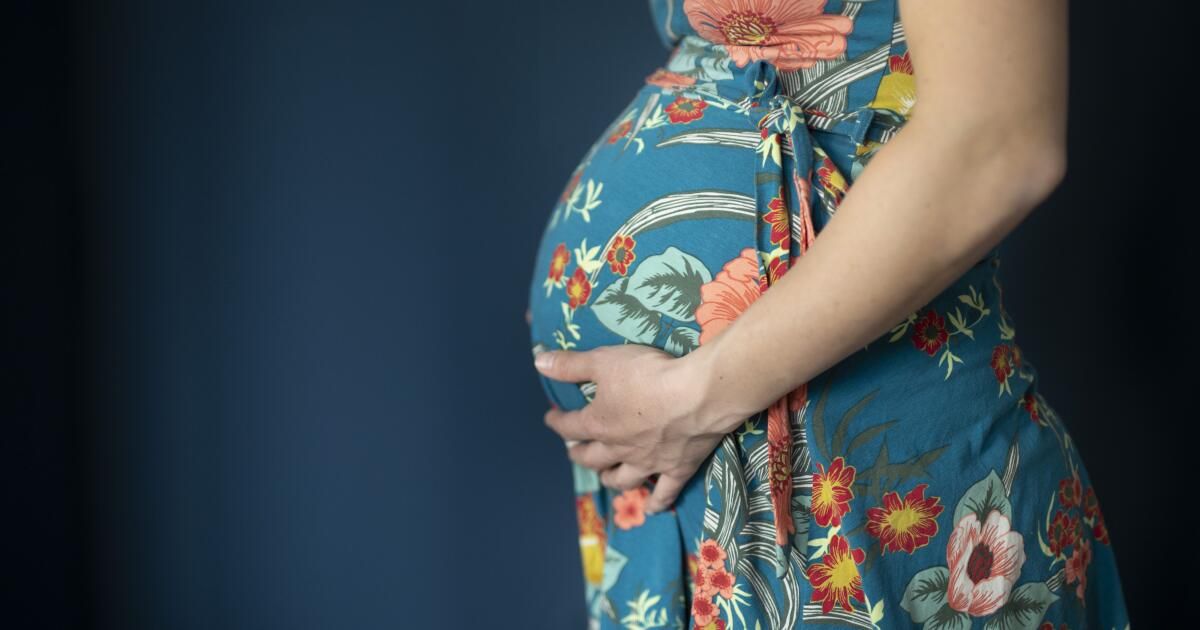Adding fluoride to drinking water is widely considered a public health triumph. The Centers for Disease Control and Prevention says the cavity prevention strategy is on par with vaccine development and recognition of the dangers of tobacco as notable achievements of the 20th century.
But new evidence from Los Angeles mothers and their preschool-aged children suggests that community water fluoridation may have a downside.
A study published Monday in JAMA Network Open links prenatal exposure to the mineral with an increased risk of neurobehavioral problems at age 3, including symptoms that characterize autism spectrum disorder. The association was seen among women who consumed fluoride in amounts considered typical in Los Angeles and across the country.
The findings do not show that drinking fluoridated water causes autism or any other behavioral condition. It is also unclear whether the relationship between fluoride exposure and problems seen in children in the Los Angeles area (a predominantly low-income and 80% Latino group) would extend to other demographic groups.
However, the results are so concerning that USC epidemiologist Tracy Bastain said she would recommend pregnant women avoid fluoridated water straight from the tap and drink filtered water.
“This exposure can affect the developing fetus,” said Bastain, the study's lead author. “Removing it from drinking water is probably good practice.”
About 63% of Americans receive fluoridated water through their taps, including 73% of those served by community water systems, according to the CDC. In Los Angeles County, 62% of residents get fluoridated water, the Department of Public Health says.
The data analyzed by Bastain and her colleagues come from participants in an ongoing USC research project called Maternal and Developmental Risks from Environmental and Social Stressors, or MOTHERS. She was invited to join women receiving prenatal care at clinics in central and south Los Angeles that serve low-income patients with Medi-Cal insurance.
Between 2017 and 2020, 229 mothers underwent a test to measure the concentration of fluoride in their urine during the third trimester of pregnancy. Then, between 2020 and 2023, they completed a 99-question survey to assess their children's behavior when their sons and daughters were 3 years old.
Among other things, the survey asked mothers if their children were restless, hyperactive, impatient, clingy or accident-prone. It also asked about specific behaviors, such as resisting bedtime or sleeping alone, chewing on things that aren't edible, holding your breath, and worrying too much about order or cleanliness.
Some of the questions the mothers answered addressed health problems with no obvious medical cause, including headaches, cramps, nausea and rashes.
Among the 229 children (116 girls and 113 boys), 35 were found to have a range of symptoms that placed them in the clinical range or clinical border of internally focused problems, such as sadness, depression, and anxiety. Additionally, 23 were in the clinical range or clinical borderline for other-directed behaviors, such as yelling in a classroom or attacking other children, and 32 were considered at least clinical borderline for a combination of internal and external problems.
What interested the researchers was whether there was any correlation between a child's risk of having clinical or borderline behavioral problems and the amount of fluoride in his mother's urine during pregnancy.
They found that compared to women whose fluoride levels placed them in the 25th percentile (meaning 24% of the women in the study had lower levels than theirs), women in the 75th percentile had 83 % more likely that your child would score on the “clinical” exam. or “borderline clinical” range for combined internal and external problems. When the researchers focused only on children in the clinical range, that risk increased to 84%, according to the study.
The researchers also found that the same increase in fluoride levels was associated with an 18.5 percent increase in a child's symptoms related to autism spectrum disorder, as well as an 11.3 percent increase in symptoms of anxiety.
The amount of fluoride needed for mothers to move from the 25th to the 75th percentile was 0.68 milligrams per liter. As it happens, that's almost identical to the 0.7 mg per liter standard that federal regulators say is optimal for preventing cavities.
Bastain said that allowed researchers to compare what could happen to children in two parallel universes: a typical one in which their mothers consumed fluoridated water during pregnancy and an alternative one in which they did not.
“It can be used as an indicator of whether they lived in a fluoridated community or not,” he said.
What that thought experiment shows is that children in the fluoridated community face a higher level of risk. That said, it's unclear when that risk becomes high enough to be concerning.
“We don't know what the safety threshold is,” Bastain said. “It's not like you can say that as long as you're below the 75th percentile, there are no effects.”
The study authors' concerns about fluoride's effects on developing brains didn't come out of the blue.
The National Toxicology Program, a joint effort of the CDC, the National Institutes of Health and the Food and Drug Administration, has been investigating the problem since 2016. In a report last year that reviewed a series of human and animal tests laboratory, a working group concluded “with moderate confidence” that overall fluoride exposure at levels equal to or greater than 1.5 mg per liter “is consistently associated with lower IQ in children.”
The task force added that “more studies are needed to fully understand the possibility that lower fluoride exposure affects children's IQ.”
A 2019 study of hundreds of mothers in Canada, where 39% of residents have fluoridated water, found that a 1 mg increase in daily fluoride intake during pregnancy was associated with a 3.7-point reduction in IQ scores in their 3- and 4-year-old children. one year old children
And among hundreds of pregnant women in Mexico, a 0.5 mg per liter increase in urinary fluoride was accompanied by a 2.5-point drop in the IQ scores of their children ages 6 to 12, researchers reported in 2017.
Bastain and colleagues write that their study is the first to their knowledge that examines the link between prenatal fluoride exposure and neurobehavioral outcomes in children in the United States. The results are sure to be controversial, Bastain said, but there is a simple way for pregnant people to reduce the possible risk.
“It's a pretty simple intervention to get one of those tabletop plastic jugs” that filter out the metals, he said. “Most of them do a pretty good job of filtering out fluoride.”












